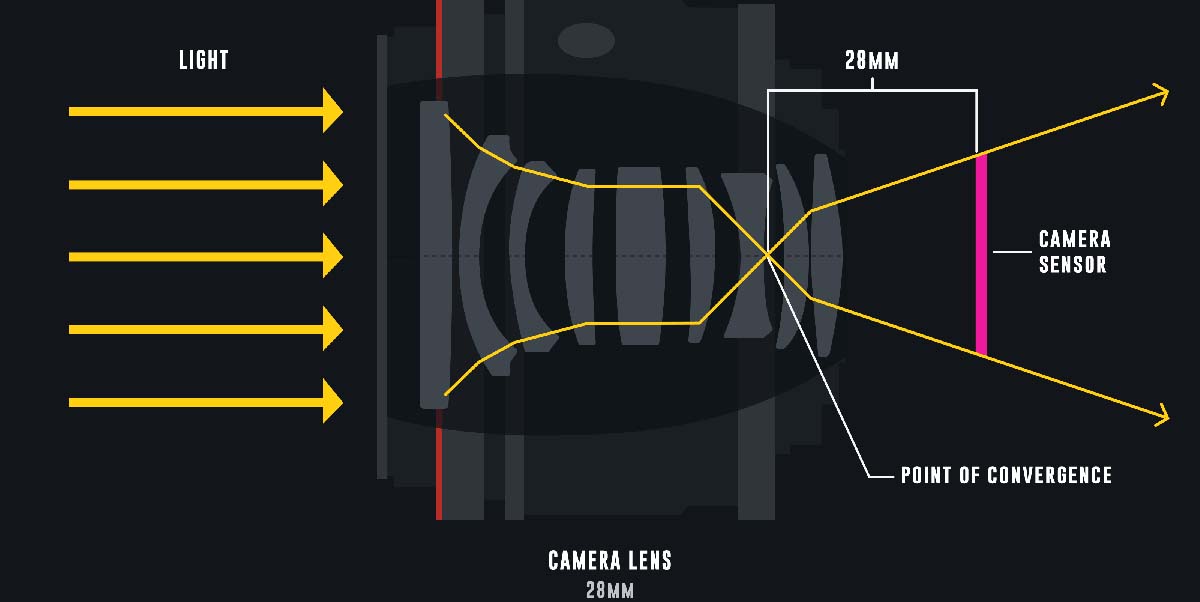Selecting the Correct Lense
A camera without its lens is considered useless. Figuring out which lenses will suit your specific needs is not always easy working in conjunction with the camera is a lens’s purpose in making images. it’s all about the lens and less about the camera body that you own. Not only choosing the right lens but choosing a quality lens can help produce high-quality photos for your photographic needs.
While the camera body provides the megapixels, controls, light meter, ISO, and shutter release, the lens controls what is being projected onto your camera’s image sensor, the angle of view, the magnification, and much more.

As you may come to find getting into photography, the web is saturated with information, and choosing a lens for your needs can be intimidating at best. Below is a review of the important features you must consider on a lens and how the different manufacturers label it
1- FOCAL LENGHT:
Simply, it describes how wide or narrow the field of view is in connection to how long or short the focal length is. the shorter the focal length, (10mm, 16mm, 24mm), the wider the scene that is captured.
In relation to that, the longer the focal length, (70mm, 85mm, 100mm, 200mm, etc.), the smaller the scene that is captured. With a shorter focal length, the subject of focus may appear smaller, whereas, with a longer focal length, the subject of focus will appear more magnified and fill more of the frame.
2- APERTURE:
Another important aspect of a camera lens is the aperture. Aperture refers to the opening in the lens, which regulates the amount of light passing through to the camera sensor. Depending on how wide or small that opening is will determine how much or how little light is passing through.
Considering that apertures are a fraction of the focal length, this is where we hear the term ‘f stop’—and they are shown in a couple of ways. The aperture is usually shown as ‘f/’ or ‘F’ with the size of the aperture following after, for example, f/1.8 or F1.8.
TYPES OF LENSES
1- ULTRA-WIDE:Considering that they are good for tight spaces, in order to include more of the surroundings, they are typically used for real estate photography, i.e. architecture and the interior.
2- WIDE ANGLE:
Much like an ultra-wide-angle lens, the wide-angle is good for capturing the whole subject, like buildings. They can also be used for sports, wildlife, and even portraits if wanting to capture a group of people or just include more background context in an image.
3- ZOOM OR KIT LENS:
Due to the versatility and various focal lengths that they provide, the kit lens or zoom lens can be good for a number of subjects—may it be street photography, documentary, landscape, or portrait. As a good all-around lens, the kit lens or zoom lens is something I use.
4- MACRO:
Besides close up photography of flowers, insects, and water drops, the macro camera lenses are well used for portrait or beauty images—as well as jewelry and other commercial photography. This has to do with their innate sharpness and focal lengths.
5- PRIME:
Although they lack the versatility of a zoom lens, in the sense that they aren’t a one-stop shop, their variety in lengths makes them an excellent option for an array of subjects among their sharpness and speed. Portrait and food are at the top of the list for the subject matter, not only because photographers tend to crop in close, but the compression and shallow depth of field is flattering. There is a prime lens for any photographer’s need—street photography, landscape, wildlife, you name it.
6- TELEPHOTO:
When someone picks up a camera, they’re usually inspired by something that interests them like landscapes, portraits, real estate, food, commercial work i.e. jewelry, beer or cocktails, makeup products, and much more. Whatever it may be, you need the necessary equipment to not only photograph but produce quality work. Buy the best lens you can afford.


